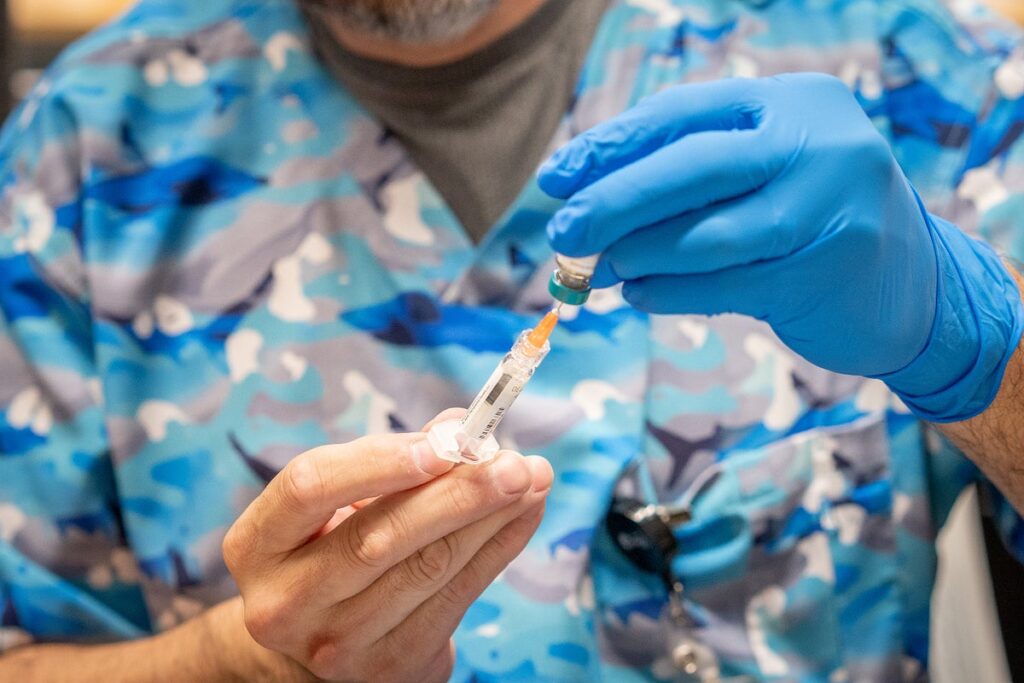August 18, 2025
3 min read
More Teens Are Getting Vaccines
Bucking national trends in childhood vaccination rates, more teens are getting recommended shots, including for measles and whooping cough
A healthcare worker fills a syringe with the MMR vaccine at a vaccine clinic put on by the Lubbock Public Health Department on March 1, 2025 in Lubbock, Texas.
Jan Sonnenmair/Getty Images
U.S. teenagers are rebelling.
More teens got recommended vaccinations in 2024 than did so in 2023. This trend is the opposite of what’s happening in younger children: vaccine rates in the U.S. continue to fall among kids who are entering kindergarten. The numbers come from the most recent report on childhood vaccinations from the Centers for Disease Control and Prevention.
The uptick among teens is a win for public health as the vaccine framework in the U.S. is under attack. Robert F. Kennedy, Jr., head of the Department of Health and Human Services, has placed antivaccine advocates on the CDC’s advisory committee that makes vaccine recommendations. The federal government has ended grants for the development of mRNA vaccines despite the safety and success of COVID shots. Since January there have been 32 measles outbreaks, largely among children and teens that did not get measles shots.
On supporting science journalism
If you’re enjoying this article, consider supporting our award-winning journalism by subscribing. By purchasing a subscription you are helping to ensure the future of impactful stories about the discoveries and ideas shaping our world today.
But the new findings suggest that communication between providers and parents can lead to higher vaccine uptake. In 2024 the percentage of teens aged 13 to 17 who got two or more doses of the combination measles, mumps and rubella (MMR) shot increased from the portion in 2023, from 91.3 percent to 92.6 percent. The percentage of teens who got the combination tetanus, diphtheria and pertussis (Tdap) vaccine rose from 89 percent in 2023 to 91.3 percent last year. And the number of teens who got at least one dose of the four-pronged meningococcal ACWY (MenACWY) shot increased from 88.4 percent in 2023 to 90.1 percent in 2024. (The MenACWY vaccine spurs an immune response to four versions of a bacteria that causes meningitis.)
The results were published last Friday in the CDC’s Morbidity and Mortality Weekly Report. The authors analyzed data collected from the 2024 National Immunization Survey–Teen, a two-phase survey that asked parents and their children’s providers about vaccine use.
But not all of the trends were upward. In 2024, for the third year in a row, teens’ uptake of the HPV vaccine—which protects against the cancer-causing human papillomavirus—remained the same. The national average of teens who have had at least one dose of the HPV vaccine held steady at 78 percent, though there was broad variability from state to state. The researchers reported that, in 2024, less than 40 percent of teens in Mississippi got at least one shot, but close to 80 percent in Massachusetts did so.
And communication was key: parents who reported talking about the vaccine with a provider were more likely to have teens who got it. In metropolitan statistical areas (which can include urban, suburban and rural communities), the percentage of teens who got the vaccine was about 18.8 percentage points higher on average when their provider recommended it than when the provider didn’t.
And in addition to variability among states, there were other differences. In general, urban areas had higher vaccination rates than rural areas and, in some cases, suburban ones. This sort of difference has long been the case in the U.S., where transportation, insurance coverage and provider availability have created wide rural-urban disparities in health care access.
For some of the diseases targeted by the vaccines on the CDC’s immunization schedule, even the increase in teens getting the shots doesn’t mean the U.S. is at a herd immunity level, the point at which the population as a whole is more generally protected from an illness. For example, to achieve herd immunity for pertussis, 92 to 94 percent of the population needs to be vaccinated. The vaccination rate for kindergartners in 2024–2025 was 92.1 percent. Teens were at 91.3 percent, putting the U.S. just under the lower threshold for herd immunity. In 2024 there were more than 35,000 cases of whooping cough in the U.S. In 2023 there were approximately 7,000.

